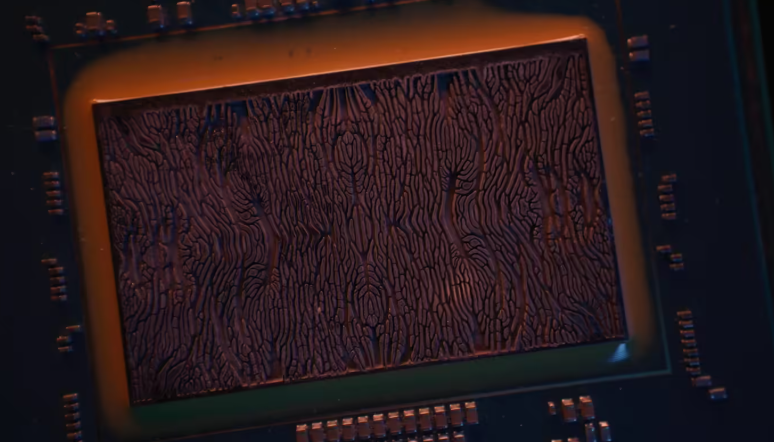On September 23, Microsoft announced a major breakthrough in AI chip cooling technology. Its newly developed on-chip microfluidic cooling system delivers three times the heat dissipation efficiency of the most advanced cold plate solutions, offering a new approach to tackling high power consumption in data centers.

Traditional cold plate cooling attaches a plate to the chip surface, relying on coolant circulation to absorb heat. However, multiple intermediate layers limit heat transfer. Microsoft’s system removes these insulating barriers entirely, allowing coolant to flow directly over the silicon die and extract heat at the source. Moreover, the system uses AI-based thermal analysis to guide coolant toward hotspot regions, enabling targeted and efficient cooling.
Testing shows that this technology can reduce peak GPU temperature rise by up to 65% under varying workloads. It also significantly improves data center Power Usage Effectiveness (PUE), lowering cooling energy consumption and grid demand. In simulated server environments like Teams meetings, chip temperatures remained stable even under high and bursty loads. This stability allows data centers to safely overclock chips for higher performance without needing extra idle hardware—drastically cutting operational costs.
Challenges remain for widespread adoption, including engineering robust microchannels that balance fluid flow and structural integrity, along with leakage prevention, coolant optimization, and manufacturing integration.

ICgoodFind : Microsoft’s cooling innovation opens a new path for managing high-power chip heat, potentially driving the next leap in data center energy efficiency.





